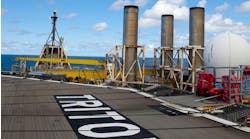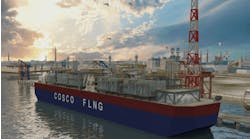Offshore staff
SHANGHAI -- Half of the cost overruns and delays in offshore projects could be mitigated through improvements in early risk reviews, technology qualification programs, and classification schemes, according to Norwegian classification society DNV.
Remi Eriksen, executive vice president, made these comments during a recent energy summit in Shanghai between Chinese and Norwegian government and industry representatives.
DNV estimates that the average cost overrun on new rig construction program is 35%, and the average delays total seven months. Most FPSO projects, it adds, suffer cost overruns of 20–30 % and more than six months of delays.
“These overruns and delays represent uncertainties for the owner and the contractors, and for the financial institutions financing them,” Eriksen said. “We believe that the challenge for the industry is to understand the complex risk picture better, to price the risks more specifically, and to manage the risks appropriately.”
DNV identifies the most common causes of cost overruns as:
• Orders placed before engineering is completed
• New technology implemented without proper qualification
• Insufficient engineering with regard to operational robustness and maintainability
• Problems with component deliveries and documentation when transferring fabrication
• Fabrication yards having to build competence and resources during the project
• Interfaces not identified or understood.
These problems, Eriksen stressed, apply to offshore fabrication anywhere in the world.
Contracts between the different players in a fabrication project attempt to define the risk ownership, and who is liable to pay for risk across interfaces. The risk bill can be up to $0.4 for each $1 of capex, DNV said.
Also, although contracts are specific and tight where possible, some aspects are always open to interpretation and deficiencies. There are numerous complex interfaces – technical, commercial, organizational, geographical – which typically carry large risks. The answer is a common and shared risk management process, DNV claims.
Eriksen acknowledged risks are necessary for companies to grow and to create value for stakeholders. “The aim is not to eliminate risks, but to understand, price and better manage risks. We believe that early risk reviews, technology qualification programs and high quality classification and verification schemes are important risk management tools.” he added.
06/03/2010


